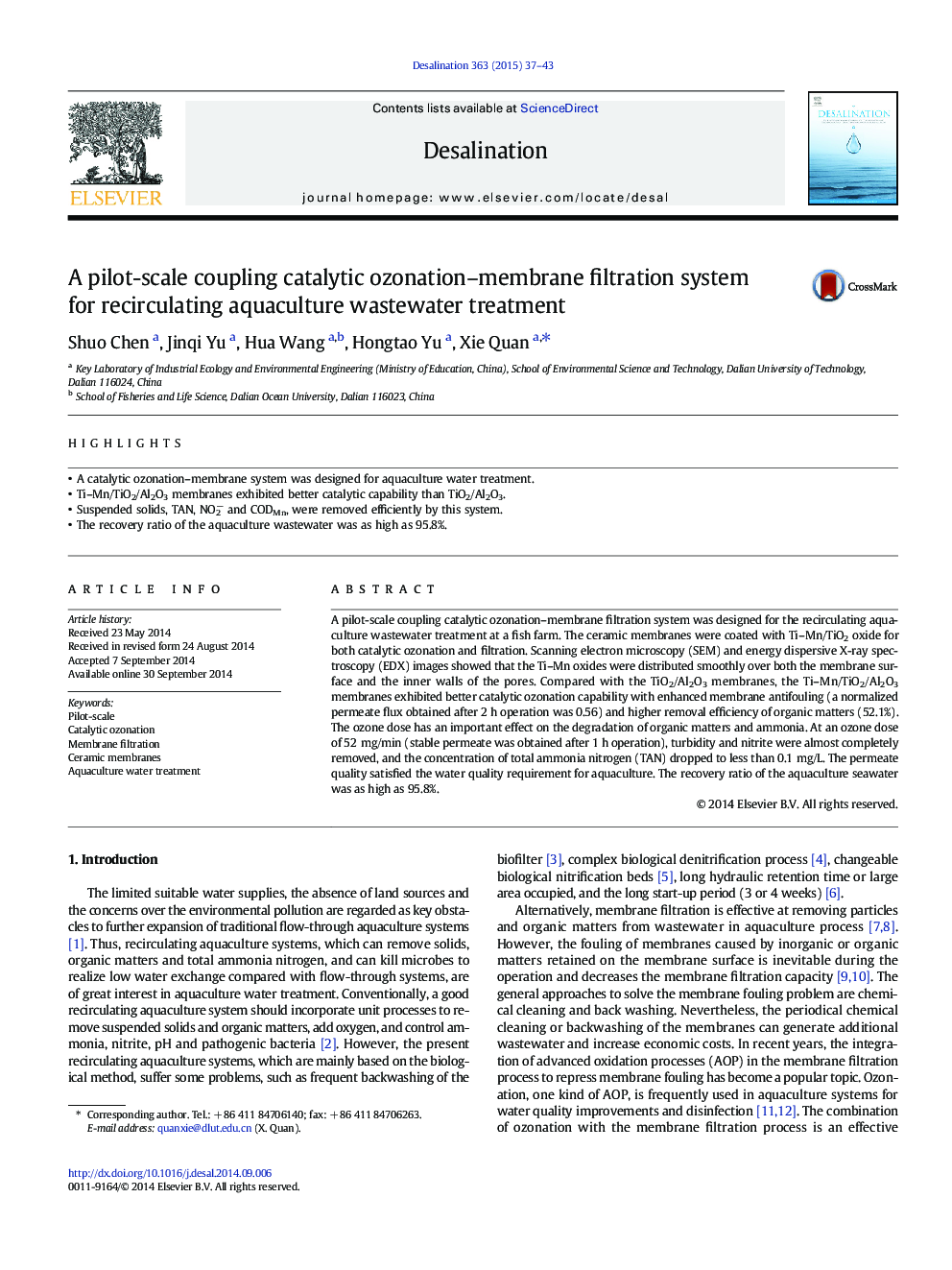| کد مقاله | کد نشریه | سال انتشار | مقاله انگلیسی | نسخه تمام متن |
|---|---|---|---|---|
| 623115 | 1455332 | 2015 | 7 صفحه PDF | دانلود رایگان |
• A catalytic ozonation–membrane system was designed for aquaculture water treatment.
• Ti–Mn/TiO2/Al2O3 membranes exhibited better catalytic capability than TiO2/Al2O3.
• Suspended solids, TAN, NO2− and CODMn, were removed efficiently by this system.
• The recovery ratio of the aquaculture wastewater was as high as 95.8%.
A pilot-scale coupling catalytic ozonation–membrane filtration system was designed for the recirculating aquaculture wastewater treatment at a fish farm. The ceramic membranes were coated with Ti–Mn/TiO2 oxide for both catalytic ozonation and filtration. Scanning electron microscopy (SEM) and energy dispersive X-ray spectroscopy (EDX) images showed that the Ti–Mn oxides were distributed smoothly over both the membrane surface and the inner walls of the pores. Compared with the TiO2/Al2O3 membranes, the Ti–Mn/TiO2/Al2O3 membranes exhibited better catalytic ozonation capability with enhanced membrane antifouling (a normalized permeate flux obtained after 2 h operation was 0.56) and higher removal efficiency of organic matters (52.1%). The ozone dose has an important effect on the degradation of organic matters and ammonia. At an ozone dose of 52 mg/min (stable permeate was obtained after 1 h operation), turbidity and nitrite were almost completely removed, and the concentration of total ammonia nitrogen (TAN) dropped to less than 0.1 mg/L. The permeate quality satisfied the water quality requirement for aquaculture. The recovery ratio of the aquaculture seawater was as high as 95.8%.
Journal: Desalination - Volume 363, 1 May 2015, Pages 37–43
